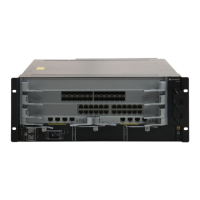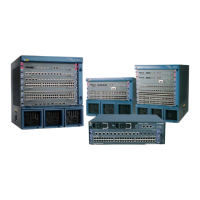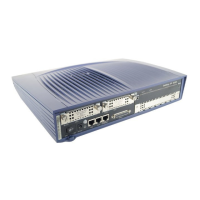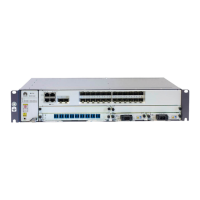remark dscp af33
statistic enable
traffic behavior b3
car cir 4000 pir 10000 cbs 500000 pbs 1250000 mode color-blind green pass
yellow pass red discard
remark dscp af13
statistic enable
traffic behavior b1
car cir 2000 pir 10000 cbs 250000 pbs 1250000 mode color-blind green pass
yellow pass red discard
remark dscp ef
statistic enable
#
traffic policy p1
classifier c1 behavior b1
classifier c2 behavior b2
classifier c3 behavior b3
#
interface GigabitEthernet1/0/1
port link-type trunk
port trunk allow-pass vlan 100 110 120
traffic-policy p1 inbound
#
interface GigabitEthernet2/0/1
port link-type trunk
port trunk allow-pass vlan 100 110 120
#
return
2.6.3 Example for Configuring Traffic Shaping
You can configure traffic shaping and set different traffic shaping rates for different types of
packets to reduce the jitter and ensure bandwidth of various services.
Networking Requirements
The Switch is connected to GE 2/0/1 and the router; the 802.1p priorities of voice, video, and
data services from the Internet are 6, 5, and 2 respectively, and these services can reach users
through the router and Switch, as shown in Figure 2-5. The rate of the traffic from the network
side is greater than the rate of the LSW interface; therefore, a jitter may occur in the outbound
direction of GE 1/0/1. To reduce the jitter and ensure the bandwidth of various services, the
requirements are as follows:
l The CIR on the interface is 10000 kbit/s.
l The CIR and PIR for the voice service are 3000 kbit/s and 5000 kbit/s respectively.
l The CIR and PIR for the video service are 5000 kbit/s and 8000 kbit/s respectively.
l The CIR and PIR for the data service are 2000 kbit/s and 3000 kbit/s respectively.
Quidway S7700 Smart Routing Switch
Configuration Guide - QoS 2 Traffic Policing and Traffic Shaping Configuration
Issue 01 (2011-07-15) Huawei Proprietary and Confidential
Copyright © Huawei Technologies Co., Ltd.
72

